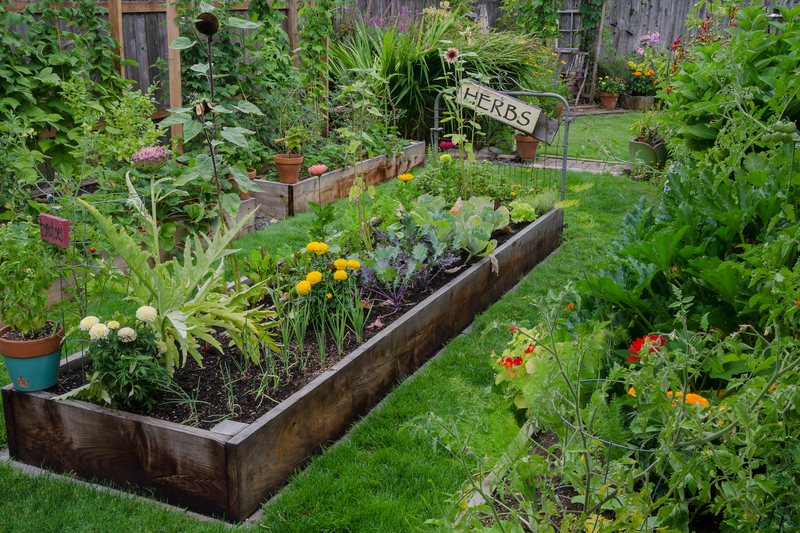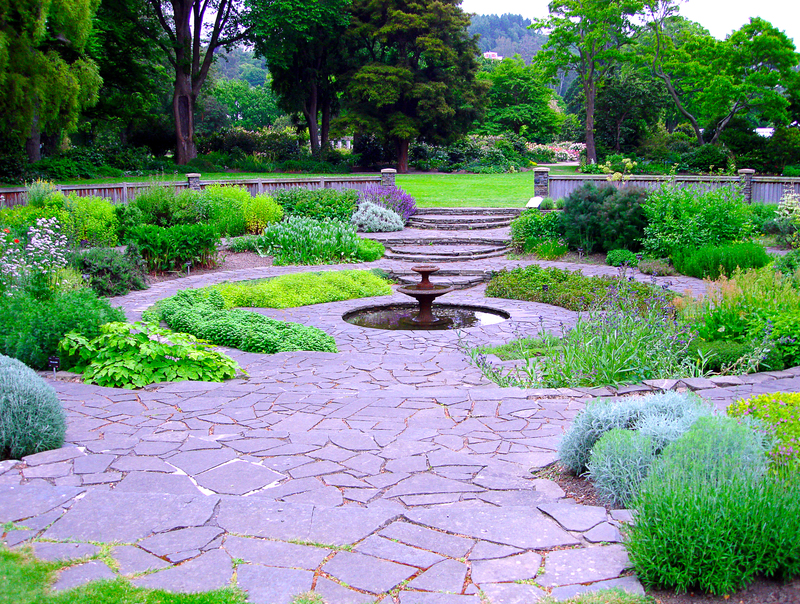Lush and Lively Herb Gardens for Beginners
Posted on 29/06/2025
Lush and Lively Herb Gardens for Beginners: An Ultimate Guide
Dreaming of cultivating your own lush and lively herb gardens? Whether you have a sprawling backyard or a sunny windowsill, planting herbs is a rewarding way to bring greenery--and flavor--into your daily life. If you're new to herb gardening, this comprehensive guide will equip you with the knowledge needed to create thriving, beautiful herb gardens, even if you've never planted a seed before.

Why Start a Herb Garden?
Starting a vibrant herb garden offers a variety of benefits that go beyond just their enticing scents and beauty:
- Fresh Flavors: Enjoy homegrown taste straight from your garden into your kitchen.
- Savings: Growing your own herbs is far more cost-effective than buying fresh or dried varieties.
- Aesthetics: A lush herb garden is visually pleasing and enlivens any space, indoors or out.
- Well-being: Gardening is a soothing, stress-reducing activity that brings you closer to nature.
- Versatility: Herbs are not just for cooking--they're excellent for teas, natural remedies, and even crafts.
Choosing the Right Location for Your Herb Garden
The success of your herb gardening journey begins with selecting the ideal spot. Herbs are adaptable, but they do have preferences:
Consider Sunlight Requirements
Most herb varieties thrive in at least 6 hours of sunlight each day. Look for a south-facing window if growing indoors. Outdoors, choose a spot that isn't shaded by trees or buildings.
Soil and Drainage
Herbs dislike soggy roots. Choose a site with well-draining soil. If your soil is heavy, consider raised beds or containers. Amend garden beds with compost to improve fertility and drainage.
Essential Tools and Supplies for Herb Gardening Beginners
- Containers or Pots: If you're short on space, attractive pots can transform balconies or patios into mini herb paradises.
- Herb Seeds or Starter Plants: Seeds are more economical, but small starter plants can be easier for novices.
- High-Quality Potting Mix: Look for a mix with good drainage properties for both indoor and outdoor gardens.
- Watering Can or Spray Bottle: Gentle watering prevents disrupting the soil or damaging tender seedlings.
- Labels: Mark each herb as you plant so you can identify and care for each one individually.
Top 10 Easy Herbs for a Lush and Lively Garden
Not all herbs are created equal. For beginners, certain herbs offer simplicity, resilience, and high yields. Try starting with these herb gardening staples:
- Basil: Sweet basil is a favorite for Italian dishes. It loves warmth and regular harvesting encourages bushy growth.
- Mint: Incredibly hardy--best grown in containers to prevent it from taking over your garden.
- Parsley: Curly or flat-leaf, it's versatile and adds a vibrant green to any dish.
- Chives: Their mild onion flavor is perfect for salads, soups, and garnishes.
- Cilantro/Coriander: Fast-growing and popular in many world cuisines. Prefers cooler seasons.
- Rosemary: Woody and aromatic, rosemary adds elegance and fragrance to your herb plot.
- Thyme: Requires minimal care and thrives in both ground and containers.
- Dill: Its feathery fronds are beautiful and excellent for pickling.
- Sage: Offers texture to the garden and flavor to myriad dishes.
- Oregano: Another Mediterranean favorite, excellent dried or fresh.
Step-by-Step: Planting Your Herb Garden for Beginners
Starting with Seeds vs. Transplants
Seeds are economical and provide variety, but require more patience. Transplants (young plants) give you a head start and are ideal for first-time herb gardeners looking for quick results.
Planting Instructions
- Seed Planting: Sprinkle seeds over moist soil and cover lightly, per packet instructions. Mist gently to avoid washing away seeds.
- Transplanting: Create a small hole slightly larger than the root ball. Place the plant, firm the soil, and water well.
Container Gardening Tips
- Ensure pots have drainage holes to prevent waterlogging.
- Use a saucer for indoor pots to catch excess water.
- Group herbs with similar water and sun requirements together.
Watering and Feeding Your Herb Garden
Herbs generally prefer to be kept on the drier side rather than waterlogged:
- Water deeply, but less frequently. Let the top inch of soil dry before watering again.
- Avoid overwatering, especially in cooler months or indoors.
- Fertilize sparingly-- too much results in less flavor. Use diluted, organic fertilizer every 4-6 weeks during the growing season.
- Mulch outdoor beds with straw or bark to retain moisture and suppress weeds.
Maintaining a Lush and Lively Herb Garden
Pruning and Harvesting
Regular harvesting encourages herbs to become bushier and more productive. For most herbs, pinch off the tips or snip stems with clean scissors:
- Don't remove more than one-third of the plant at once.
- Frequent cutting of flowering herbs prevents bolting (going to seed), which can turn leaves bitter.
Pest and Disease Management
- Monitor regularly for aphids, whiteflies, and mildew.
- Encourage beneficial insects like ladybugs.
- Use natural remedies like neem oil or soap sprays when needed.
- Remove any diseased leaves promptly to prevent spread.
Overwintering and Year-Round Enjoyment
To keep your herb garden lively all year:
- Move sensitive potted herbs indoors before the first frost.
- Perennials can be mulched or covered outdoors to survive winter.
- Consider artificial grow lights for indoor gardening during dark months.
Creative Ideas for Herb Garden Design
Adding originality to your herb garden layout not only enhances curb appeal but also makes gardening more enjoyable.
Container Herb Gardens
- Use mismatched pots and containers to create visual interest.
- Repurpose teacups, wooden crates, or even shoes for quirky plant homes.
- Build a tiered herb garden for small balconies or patios.
Vertical Herb Gardens
- Install wall-mounted planters or pocket organizers.
- Try hanging baskets or stackable pots to save space.
Herb Spirals and Raised Beds
- Construct a spiral-shaped bed to maximize space and provide varied sun exposure for different herb types.
- Use raised beds to make tending and harvesting easier and improve drainage.
Herb Garden Troubleshooting: Common Problems & Solutions
-
Leggy Seedlings:
Symptoms: Tall, spindly plants
Solution: Move to a sunnier spot or add supplemental lighting. -
Yellow or Wilting Leaves:
Symptoms: Discolored, droopy foliage
Solution: Check soil moisture--over or under-watering is usually the culprit. -
Pest Infestation:
Symptoms: Holes, sticky residue, or visible bugs
Solution: Rinse leaves, use organic sprays, or isolate affected plants. -
Poor Growth:
Symptoms: Stunted or slow-to-grow
Solution: Refresh soil, add balanced fertilizer sparingly, check sun exposure.

Harvesting, Preserving, and Using Fresh Herbs
How to Harvest and Store
- Harvest in the morning for best flavor--just after dew has dried but before the sun wilts the leaves.
- Use sharp scissors to snip stems just above a leaf node to promote regrowth.
- Preserve surplus herbs by drying, freezing, or making herb-infused oils and vinegars.
- Store dried herbs in airtight containers in a cool, dark place to maintain flavor.
Creative Ways to Use Your Garden Herbs
- Culinary Delights: Chop fresh basil for salads, mint for iced drinks, or rosemary for roasting meats.
- Herbal Teas: Use chamomile, mint, or lemon balm leaves for soothing teas.
- Home Remedies: Lavender for relaxation, sage for sore throats, and calendula for skin care.
- Herbal Crafts: Create sachets, wreaths, or bath salts using homegrown herbs.
Conclusion: Embark on Your Herb Garden Adventure
Creating a lush and lively herb garden is a rewarding journey for beginners and seasoned growers alike. By selecting the right herbs, providing proper care, and embracing creative gardening methods, you'll enjoy fragrant, flourishing greenery and a steady supply of fresh flavors year-round. Whether you're cultivating your indoor kitchen windowsill or transforming a backyard bed, herb gardens for beginners offer endless possibilities and lasting joy. Start sowing today, and watch your garden--and your gardening skills--grow!
- Ready to transform your space with lush, lively herb gardens? With these easy tips, anyone can become a confident, creative herb gardener.
- Happy planting and bountiful harvesting!

